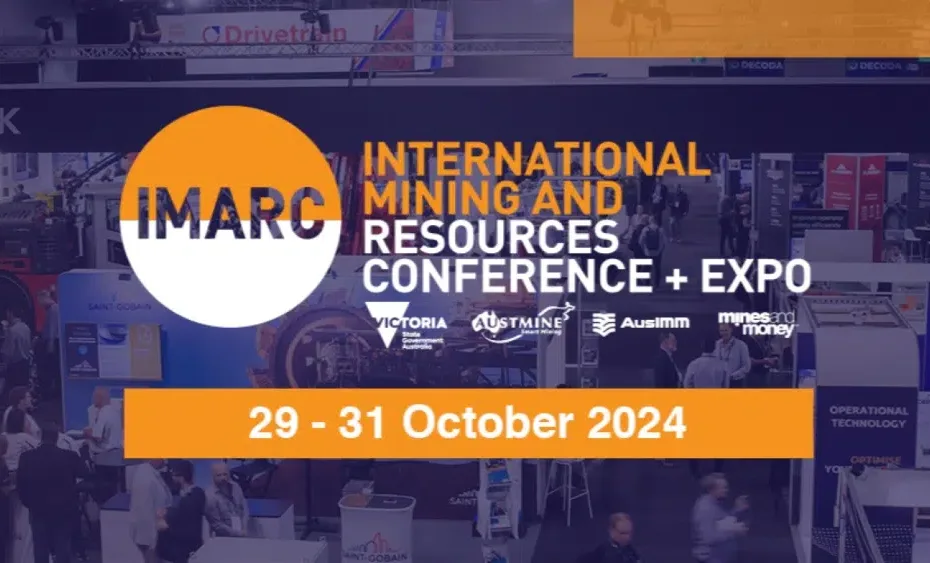The brilliant Leah Cummins hopes visitors hear one thing above all the noise and commotion being generated by thousands of people at this year’s IMARC in Sydney and that’s the laughter and joy coming from the Indigenous Women in Mining and Resources Australia (IWIMRA) stand.
“All the girls at IWIMRA are excited to come together at IMARC and paint and bring some of our indigenous culture to the event,” Cummins says from her home in Brisbane, where she runs Bunya Designs and produces both hand-painted and digital Aboriginal art.
“We are spread out so much. We’ve got people in Weipa, people in Karratha, down in Perth, in Adelaide … We all enjoy seeing each other again. We had people around us last year saying they were just so entertained watching us paint and laugh and have jokes.
Celebrating Indigenous Culture Through Art and Community
“I’ve had people that have connected with me on LinkedIn from Canada and other places around the world and they’re like, I’m going to see you this year at IMARC. They’ve heard about the live painting and the story of Indigenous Women in Mining and Resources.
“It’s really been such a joyous thing for people to come and have a paint and learn a bit about the organisation and the backgrounds of the IWIMRA women at the stand.”
Seven-year-old IWIMRA, which has about 140 current members based at more than 20 sites around Australia, is the foundational First Nations partner at IMARC and a leading contributor to discussions about indigenous partnerships in the resources sector, enterprise leadership, workforce participation, skills and training.
Leah Cummins: From Geoscience to Artistry
Cummins, who has a geoscience background and worked in the industry for about 20 years, has become the event’s artist in residence.
Her art, including this year’s unique event mural, symbolises the intersection of the modern mining industry and the country’s oldest culture.
Heavily iconographic in its rich storytelling, the artform has also been used by Cummins to project historic conflict between miners and indigenous peoples, more constructive pathways currently being pursued, and optimism about a more equitable and technology-led future.
She says this year’s centrepiece artwork captures both the IWIMRA and her own personal journey at IMARC, as well as that broader industry narrative:
“Past, present and future” being the central storyline, flanked by representations of diverse communities, groups and cultures coming together in one place to learn from each other and each other’s experiences, to formulate and build a better future.
“They share the environment; they share similar goals. They know that working together, sharing knowledge, using innovation and technology, is going to lead to a better future,” Cummins says.
“They can build a better future from the past.
“The different elements come together to tell that central story.
“The colours make it very inviting, and fun. I like to say it’s a visual language, because you can see the different elements and the colours contribute to that. It’s a journey of discovery of the eyes and so it’s a bit playful but there is still that serious messaging in the symbols and in the blues, the oranges and the greens.”
Empowering Indigenous Women and Inspiring Future Generations
Cummins says she first came to IMARC a “very introverted” visitor and left feeling exhausted and a bit hoarse but also exhilarated by the experience and the exposure she and IWIMRA received.
“Being around the girls, collaborating on the painting and helping to educate people about our culture … We just have so much fun,” she says.
“We’re not putting on a show or anything but people engage with us. We just really find it amazing that we can connect with a lot of different people that we never knew existed before the start of the event.
“We have a lot of women who work in the mining sector, but we’ve all got different experiences.
“I worked in the industry for 22 years and exited. I’m doing something else. I’ve got a bachelor’s degree in spatial information and technology; I’ve worked as a consultant doing capacity building within Indigenous organisations to upskill in the information technology and data management space.
“And now I’m a full-time artist.
“I feel if I’m there [at IMARC] and I’m letting people know there’s potential for other young Indigenous people to go and get a degree or other qualifications but stay involved in the industry, that’s important. You know, women like us exist. We are there.
“So I really appreciate IMARC for allowing me to come and do this, because it’s definitely something I’ve really enjoyed every year.
“I have quite a few corporate clients these days. When people say, do you have anything available around that [IMARC] date, I say, sorry, I’m booked out.
“As long as IMARC want Indigenous Women in Mining and Resources and me coming and doing the live painting, I am committed.”

